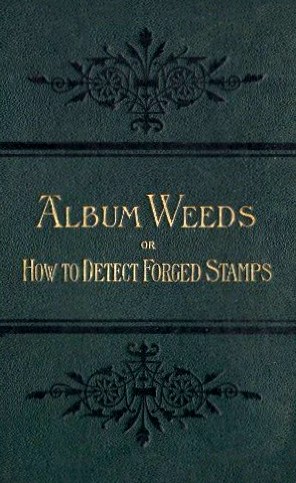
A cancellation is a postal marking applied on a postage stamp or postal stationery to deface the stamp and to prevent its reuse. Cancellations come in a huge variety of designs, shapes, sizes, and colors. Modern cancellations commonly include the date and post office location where the stamps were mailed, in addition to lines or bars designed to cover the stamp itself. The term "postmark" refers specifically to the part that contains the date and posting location, but the term is often used interchangeably with "cancellation" as it may serve that purpose. The portion of a cancellation that is designed to deface the stamp and does not contain writing is also called the "obliteration" or killer. Some stamps are issued pre-cancelled with a printed or stamped cancellation and do not need to have a cancellation added. Cancellations can affect the value of stamps to collectors, positively or negatively. Cancellations of some countries have been extensively studied by philatelists, and many stamp collectors and postal history collectors collect cancellations in addition to the stamps themselves.

Forgery is a white-collar crime that generally refers to the false making or material alteration of a legal instrument with the specific intent to defraud. Tampering with a certain legal instrument may be forbidden by law in some jurisdictions but such an offense is not related to forgery unless the tampered legal instrument was actually used in the course of the crime to defraud another person or entity. Copies, studio replicas, and reproductions are not considered forgeries, though they may later become forgeries through knowing and willful misrepresentations.

Art forgery is the creation and sale of works of art which are falsely credited to other, usually more famous artists. Art forgery can be extremely lucrative, but modern dating and analysis techniques have made the identification of forged artwork much simpler.

Giovanni (Jean) de Sperati was an Italian stamp forger. Robson Lowe considered him an artist and even professional stamp authenticators of his time attested to the genuineness of his work. Sperati created what he called a Livre d'Or which he boasted of in his autobiography and which contained 239 favourable opinions as to the genuineness of his forgeries from numerous experts, including Dr. Edward Diena and the Royal Philatelic Society London.

A revenue stamp, tax stamp, duty stamp or fiscal stamp is a (usually) adhesive label used to designate collected taxes or fees on documents, tobacco, alcoholic drinks, drugs and medicines, playing cards, hunting licenses, firearm registration, and many other things. Typically, businesses purchase the stamps from the government, and attach them to taxed items as part of putting the items on sale, or in the case of documents, as part of filling out the form.

L.N. and M. Williams were a philatelic writing partnership made up of brothers Leon Norman Williams and Maurice Williams (1905–1976).

In general, philatelic fakes and forgeries are labels that look like postage stamps but have been produced to deceive or defraud. Learning to identify these can be a challenging branch of philately.

Robert Brisco Earée (1846–1928) was an English priest and philatelist who was known for his studies of philatelic fakes and forgeries.

John Harry Robson Lowe was an English professional philatelist, stamp dealer and stamp auctioneer.
Russian stamps have been extensively forged. Both rare and common stamps have been forged and certain stamps, for instance those of the Army of the North, are more common forged than genuine.

Sigmund Friedl was one of the most famous Austrian philatelists. Toward the end of his life he defrauded stamp collectors by selling them forgeries.

François Fournier was a stamp forger who thought of himself as a creator of "art objects" and a friend of the little man.
Erasmo Oneglia (1853–1934) was an Italian printer, born in Turin, who was also a successful stamp forger in the 1890s and early 1900s.
Varro Eugene Tyler, of Auburn, Nebraska, was an American professor of pharmacognosy and philatelist who specialized in the study of forged postage stamps and the forgers who created them.
Adolfo Kaminsky was an Argentine-born member of the French Resistance, specializing in the forgery of identity documents (IDs), and photographer. During World War II, he forged papers that saved the lives of more than 14,000 Jews. He later assisted Jewish immigration to the British Mandate for Palestine and then forged identity documents for the Algerian National Liberation Front and French draft dodgers during the Algerian War (1954–62). He forged papers for thirty years for different activist groups, mainly national liberation fronts, without ever requiring payment.

The Stock Exchange forgery was a fraud perpetrated at the London Stock Exchange during the years 1872 to 1873. It involved forged postage stamps that were applied to telegraph forms and it was only detected over 25 years later.

Edward Loines Pemberton was a pioneering philatelist and stamp dealer who was a leading advocate of the scientific school of philately and a founding member of The Philatelic Society, London, now The Royal Philatelic Society London. Pemberton was entered on the Roll of Distinguished Philatelists in 1921 as one of the fathers of philately. He was born in New York City but educated in Britain by relatives when his parents died shortly after his birth. His son, Percival Loines Pemberton (1875-1949) was also an eminent philatelist.

The Buenos Aires 1859 1p "In Ps" tête-bêche pair, also known as the “In Peso” tête-bêche Pair, is the only known specimen of an inverted error on Barquitos postage stamp issued by the sovereign state of Buenos Aires.

Philip Spiro was the head of the German printing firm of Spiro Brothers of Hamburg who from 1864 to about 1880 produced around 500 different lithographed reproductions of postage stamps.

Ramón Antonio Plácido de Torres, known as Plácido Ramón de Torres, was a Spanish stamp illustrator, dealer, and forger.















